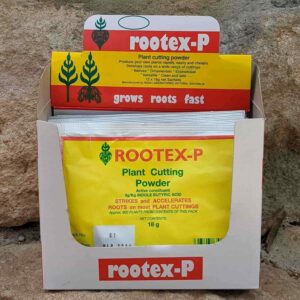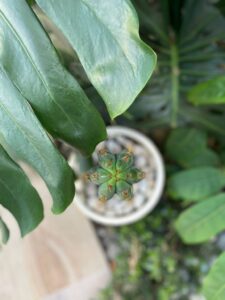Welcome to our crash course in cactus soil. This is not an in-depth guide but a primer to set newcomers up for success and what to avoid. If you’ve already got the basics down pat and want to learn more, we recommend checking out our Advanced Cactus Soil guide instead.
Pre-made Cactus Soils
Certain large hardware chains sell bags of commercial “cactus soil”, but we recommend avoiding these unless you’re really desperate. These mass-produced soils are usually just the big brand’s regular poor-quality potting mixes with some sand added in. In addition to being riddled with fungus gnats and green waste, they are usually far too organic for any cacti to thrive in.
It’s time for a shameless plug.
If mixing up soils isn’t your thing, or if you’re overwhelmed by trying to create a good growing medium for your cacti, don’t worry; we’ve got you. We sell a ready-to-use cactus soil mix, which you can find here. Unlike the big-brand cactus soils, this one is actually made by cactus growers and is guaranteed to make your plants thrive.
The Beginners DIY Cactus Soil
We primarily sell large South American columnar cacti like San Pedro and Peruvian Torches. Native to the foothills of the Andes mountains, these cacti require significantly higher organic content in their soil than desert species like Echinocactus Grusonii (Golden Barrel Cactus) or Lophophora Williamsii (Peyote). However, the soil still needs to be balanced with an appropriate amount of inorganics for drainage, aeration, and mineral nutrients.
A passionate and active community of people obsess over the perfect soil recipe for each cactus. Those high-quality mixes are going to be better, but still, we find that an accessible, cheap and simple recipe for most cacti is:
-
40% coarse perlite;
-
55% premium peat-based potting mix;
-
5% worm castings.
These percentages don’t need to be scientifically accurate. The general idea is to use slightly less perlite than potting mix, with a handful or two of worm castings thrown in, depending on the pot size.
Premium peat-based potting mix products that we can recommend in Australia include:
-
Canna Terra Professional;
-
Dr Greenthumbs GreenSpace;
-
And there would be plenty of others; a local hydroponics shop is an excellent place to look.
If you choose to use a less premium potting mix like those found at large hardware chains, you will have to sift it to remove any pieces of bark or sticks that might clog the mixture. Once you discover that about 50% of the bag is sticks and bark, you’ll realise that the premium products represent better value for money.
Add all the components to a large bucket and mix them thoroughly. If you have some slightly larger coarse rocks lying around your garden, you could add those in, too. Variance in the soil structure helps promote healthy root growth.
Some people swear by adding animal manure to their cactus soil mix, particularly for Trichocereus pachanoi. At Cactus Culture Australia, we don’t suggest using any animal manure in your cactus soil. Manure is a honeypot for bacteria, and its moisture-absorbing qualities are not helpful in our mixture.
Further Reading
Are you hungry for more information on how to improve your cactus soil? We recommend checking out our Advanced Cactus Soil guide here.
Another great resource is The Stone Eaters – an incredible and comprehensive guide on cactus soil requirements that makes the case that most cacti can survive on 100% mineral soil mixtures, AKA rocks. However, it does make the distinction that: “some cacti groups – not too many – require something else, apart from the mineral soil. And even fewer are those that do not accept it…some very large-sized columnar plants – Carnegiea Gigantea and Pachycereus Pringlei are nevertheless stone eaters – and some prairie cacti, or forest cacti…are those that absolutely require the presence of the organic component in the soil.”



